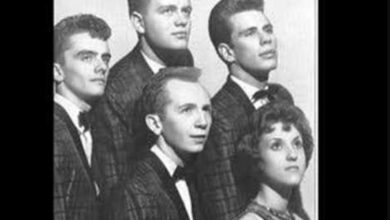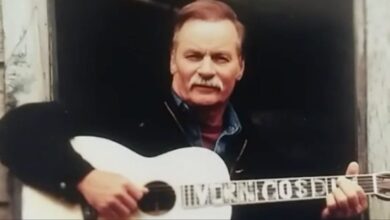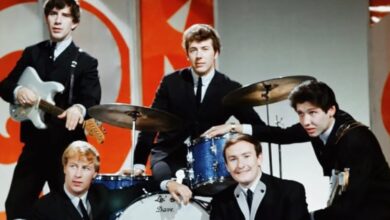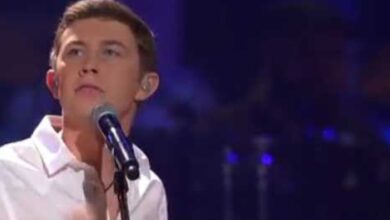Buddy Holly’s “Peggy Sue”: The Story Behind the Rock ‘n’ Roll Classic
In the vibrant tapestry of 1950s rock ‘n’ roll, few songs have left as indelible a mark as Buddy Holly’s “Peggy Sue.” Released in 1957, this track not only showcased Holly’s innovative musical style but also carried a backstory as intriguing as its melody. Originally titled “Cindy Lou,” after Holly’s niece, the song underwent a significant transformation before reaching the airwaves. The decision to rename it “Peggy Sue” was influenced by Jerry Allison, the drummer of Holly’s band, The Crickets. At the time, Allison was dating Peggy Sue Gerron, and the renaming was a gesture aimed at winning back her affections after a lovers’ quarrel.
Born Charles Hardin Holley on September 7, 1936, in Lubbock, Texas, Buddy Holly was immersed in music from a young age. His family, though not professional musicians, nurtured his musical talents, exposing him to a blend of gospel, country, and rhythm and blues. This eclectic mix would later influence his unique sound. By his teenage years, Holly was performing locally, honing his craft and developing the signature style that would soon captivate the nation.
The recording session for “Peggy Sue” was nothing short of innovative. Norman Petty’s studio in Clovis, New Mexico, became the birthplace of this classic. Jerry Allison’s drumming on the track was particularly groundbreaking. He employed a paradiddle technique, creating a rhythmic pattern that, combined with Petty’s engineering prowess, produced a dynamic, fading in-and-out drum sound. This effect added a mesmerizing quality to the song, setting it apart from other tracks of the era.
Upon its release, “Peggy Sue” quickly climbed the charts, reaching number three on the Billboard Top 100. Its success was a testament to Holly’s ability to blend catchy melodies with heartfelt lyrics. The song’s appeal lay not just in its musical composition but also in its relatable theme of youthful love and longing. Listeners were drawn to its simplicity and sincerity, making it an anthem for the teenage generation of the 1950s.
The real Peggy Sue Gerron, the muse behind the song, found herself thrust into the spotlight. In her memoir, “Whatever Happened to Peggy Sue?”, she recounted the first time she heard the song at a live performance. Overwhelmed with embarrassment, she could hardly believe a song bearing her name was being played to such acclaim. Her association with the song became a defining aspect of her life, intertwining her personal narrative with the legacy of Buddy Holly.
Buddy Holly’s career, though tragically short-lived, was marked by a series of hits that have since become timeless classics. Songs like “That’ll Be the Day,” “Everyday,” and “Rave On” showcased his versatility and knack for storytelling through music. His distinctive vocal style, characterized by its hiccup-like delivery, and his innovative guitar techniques influenced countless musicians who followed.
The Crickets, formed in 1956, became Holly’s primary backing band. Their synergy was evident in their recordings, with each member contributing to the group’s distinctive sound. The band’s lineup, including Niki Sullivan on rhythm guitar and Joe B. Mauldin on bass, complemented Holly’s lead vocals and guitar work. Together, they crafted songs that were both musically intricate and commercially appealing.
In 1958, Holly penned a sequel to his hit, titled “Peggy Sue Got Married.” This track delved into the imagined future of the song’s protagonist, showcasing Holly’s storytelling prowess. He recorded a demo of the song in his New York City apartment, accompanied only by his guitar. This raw version, discovered posthumously, was later enhanced with additional instrumentation for commercial release, further cementing Holly’s legacy as a prolific songwriter.
Tragically, Buddy Holly’s life was cut short on February 3, 1959, in a plane crash that also claimed the lives of fellow musicians Ritchie Valens and J.P. “The Big Bopper” Richardson. This day became known as “The Day the Music Died,” a testament to the profound impact of the loss on the music world. Despite his brief career, Holly’s influence on rock and roll is immeasurable, with many citing him as a pioneer who helped shape the genre’s early sound.
Over the decades, “Peggy Sue” has been covered by numerous artists, each bringing their unique interpretation to the classic. Notable renditions by John Lennon, The Beach Boys, and Waylon Jennings highlight the song’s versatility and enduring appeal. These covers serve as a testament to Holly’s songwriting genius, proving that great music transcends time and genre.
The legacy of “Peggy Sue” extends beyond the song itself. In 1986, the film “Peggy Sue Got Married,” starring Kathleen Turner, borrowed its title from Holly’s sequel track. The movie, which explores themes of nostalgia and the choices that define our lives, underscores the lasting cultural impact of Holly’s work. His music continues to inspire and resonate with new generations, a testament to its timeless quality.
Buddy Holly’s influence on subsequent musicians is profound. Artists like The Beatles openly acknowledged their debt to Holly, with Paul McCartney once stating that Holly was a primary influence on their music. The Beatles even chose their insect-inspired name as a nod to The Crickets, highlighting the deep connection they felt to Holly’s legacy.
In recognition of his contributions to music, Buddy Holly was posthumously inducted into the Rock and Roll Hall of Fame in 1986. His pioneering approach to songwriting and recording has left an indelible mark on the industry. Holly’s willingness to experiment with different sounds and recording techniques paved the way for future artists to explore new musical horizons.



